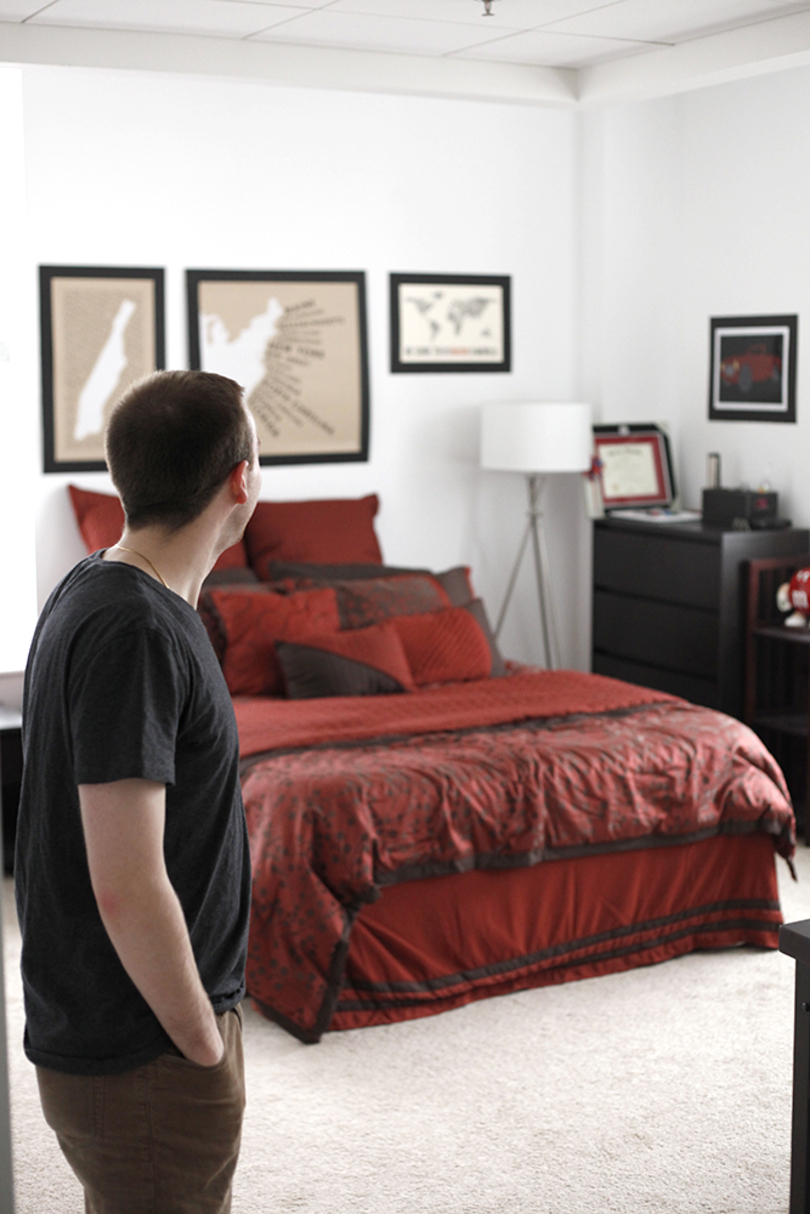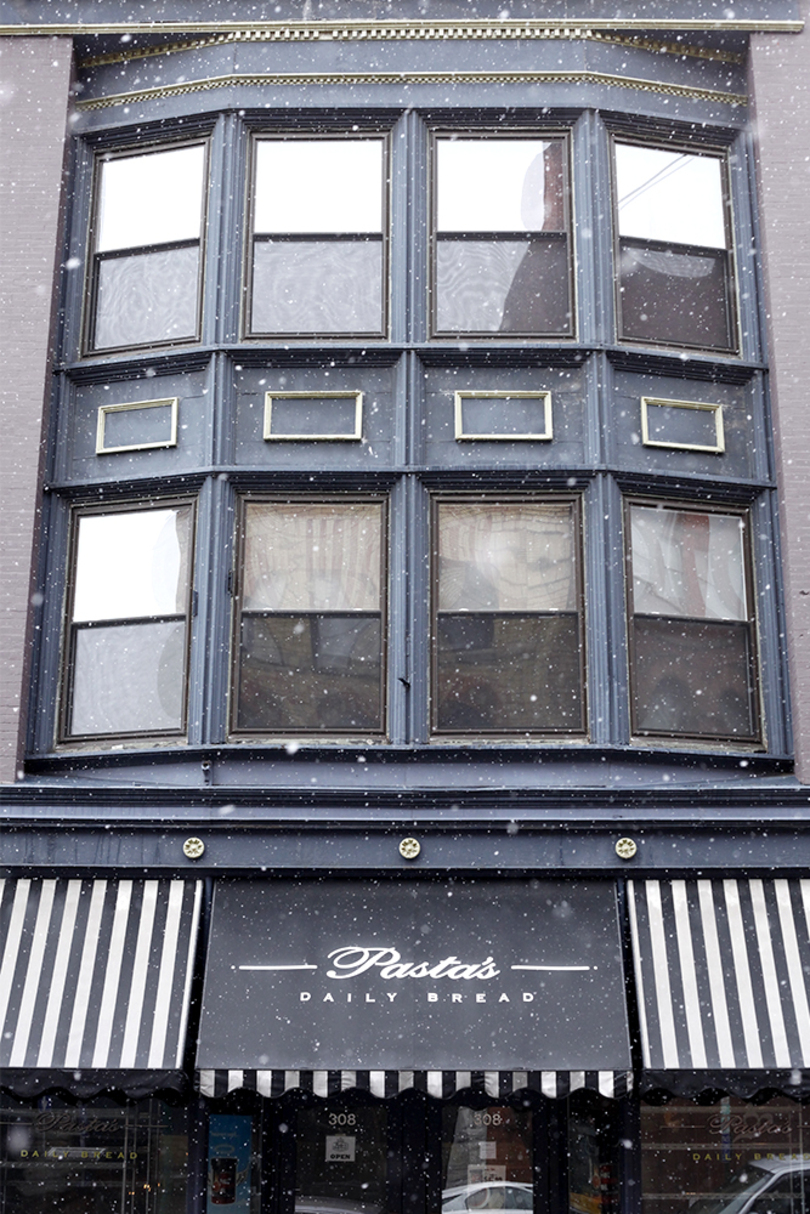Downtown dynamics: Revitalization efforts downtown attract younger demographic in Armory Square
Ask any Syracuse University student if he or she would be willing to live in Syracuse post-graduation. The answer is typically “no.”
That’s what Forrest Ball, a May 2012 graduate, thought as an undergraduate.
“I felt like living back on the Hill again, I would be back in undergrad. And that was a chapter I was ready to move on from,” said Ball, now an admissions counselor for SU.
But Ball, like a number of SU alumni and employees, chose to settle in the downtown area, drawn by the revitalization efforts in Armory Square and the lower cost of living. He lives downtown with two other SU graduates on the corner of Jefferson and Salina streets in the Loews Building, which houses the Landmark Theatre.
Together, Ball said he and his roommates pay $1,680 a month. For a three-bedroom apartment in Washington, D.C. — where Ball originally hoped to go after graduation — it would cost $1,100 per person without utilities.
Downtown developers and business owners are noticing two groups move into Syracuse’s downtown: recent college graduates and baby boomers. Downtown developer Bob Doucette described the residential area in Armory Square as having “no vacancy.”
“As soon as apartments are built, they’re being filled,” Doucette said.
Downtown rental units going for market-rate prices are at 99 percent occupancy, according to downtown housing statistics from the Downtown Committee of Syracuse. Forty percent of downtown residents are tied to the University Hill area, showing that university-area institutions and employees are investing in the downtown community.
Throughout Syracuse, Doucette, 65, is recognized as the leader behind downtown redevelopment in Armory Square and along South Salina Street.
Longtime residents say they are seeing downtown rise as historic buildings are revamped and businesses pop up. About a year ago, construction began on The Inns at Armory Square, a 180-room Marriott Courtyard/Residence Inn on the corner of South Franklin and West Fayette streets.
Back in the 1980s, Armory Square, a former warehouse district, had a “Wild West” atmosphere filled with too many bars, Doucette said. He wanted to change that. In 1984, he and friend George Curry, now a teaching professor emeritus atthe State University of New York College of Environmental Science and Forestry, bought the Labor Temple Building on the 300 block of South Franklin Street.
Artisan Italian restaurant Pastabilities moved into the refurbished building in 1985.
Karyn Korteling, owner of Pastabilities and Pasta’s Daily Bread, said customers initially didn’t want to walk to the new location because not much was happening in Armory Square. Those who were in the city to work were eager to get back to the suburbs to be with friends and family.
Today, customers enjoy round-the-clock activity and better walking paths, Korteling said. She said it is a relief to no longer hear friends complain there is nothing to do downtown.
“This downtown is definitely revitalized. It’s rediscovering that synergy that downtowns need in order to feel alive,” Korteling said. Having moved to the suburbs to start a family, Korteling is considering moving back to the city now that her children are grown.
Cities across the United States are seeing growth faster than the suburbs, according to census data. In cities where there is still a decline, it is less dramatic than other years. The trend of singles or small families — especially young people — moving into downtown areas is seen throughout the United States in cities such as Philadelphia and Boston. Downtown Syracuse, ZIP code 13202, has a median age of 28.5, according to the census.
Some attribute the changes downtown to work done, in part, through SU, namely the Connective Corridor and Near Westside Initiative. Both initiatives aim to revitalize the city through artwork and community involvement, as well as strengthen the connection between SU and downtown.
Marilyn Higgins oversees both projects as vice president of community engagement and economic development at SU. Higgins said downtown development spurred because of attention from developers to SouthSalina Street and SU’s 2006 purchase of the former Dunk & Bright Furniture warehouse on West Fayette Street. The remodeled space is now The Warehouse, which SU uses for classroom, gallery and office space.
Higgins works out of The Warehouse, and walks to work from her home in Franklin Square only a few minutes away. She moved from the suburbs to her apartment, a spacious loft with exposed brick, which costs $1,275 a month, she said. In the summer, she sometimes commutes from a cottage she keeps on Lake Ontario.
Living in the city, Higgins said she sees the benefits of SU’s initiatives.
“I enjoy doing the work because I love the city and I love making it better,” she said.
Alumni still in the area as SU employees or residents say they take advantage of downtown amenities, such as the Connective Corridor bus route, more than they did as students.
Ball, the 2012 graduate, said he rides the Connective Corridor bus instead of driving when the weather is bad. The free route is a 30-minute trip that starts at the Goldstein Student Center on SU’s South Campus and weaves its way downtown to The Warehouse. The route back to campus makes slightly different stops.
The university pays Centro $450,000 a year to run the Connective Corridor bus route and other SU routes.
But there are some drawbacks to living downtown. The area lacks a grocery store, and residents are forced to park on the street if their building does not provide parking.
The city of Syracuse is also still changing. The heart of Armory Square is rich with boutique shops and restaurants, but beyond the quaint cobblestones, the city transitions into an urban center still trying to find its place as a recovering Rust Belt city.
Amanda Gold, a 2008 graduate, decided to move downtown when her father Neil, a 1970 alumnus, retired to Manlius, N.Y., from Long Island. Drawn to the business scene in Armory Square, Gold and her father purchased three Armory Square women’s boutiques in March: Jet Black, Bounce and Frankie & Faye.
As a student, Gold said she probably visited Armory Square three times as an upperclassman. When she tells current SU students who shop at her boutiques that she lives within a three-minute walk from the store, they seem surprised.
She said she hopes they realize Syracuse offers the feeling of living in a big city, but with fewer complications and a lower cost.
“I love the small town atmosphere, but the city feel,” Gold said. “If we had a grocery store, I probably would never have to leave downtown.”
Published on February 26, 2013 at 1:01 am
Contact Dara: dkmcbrid@syr.edu | @daramcbride







